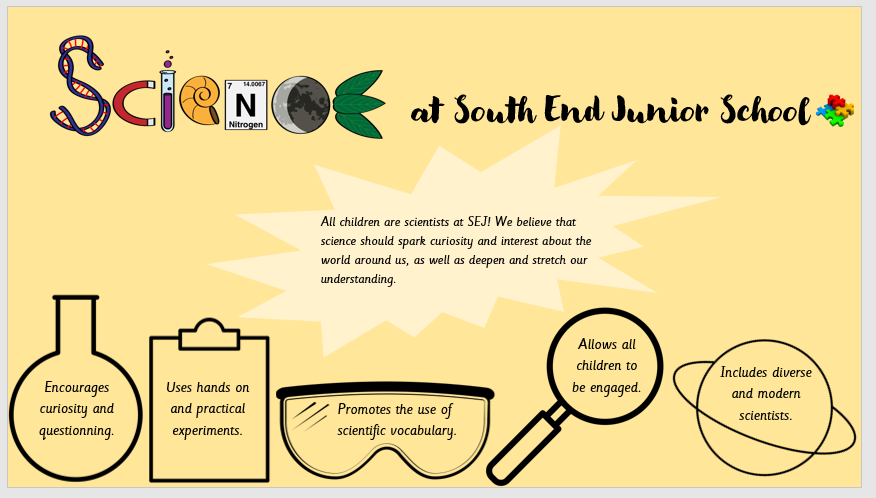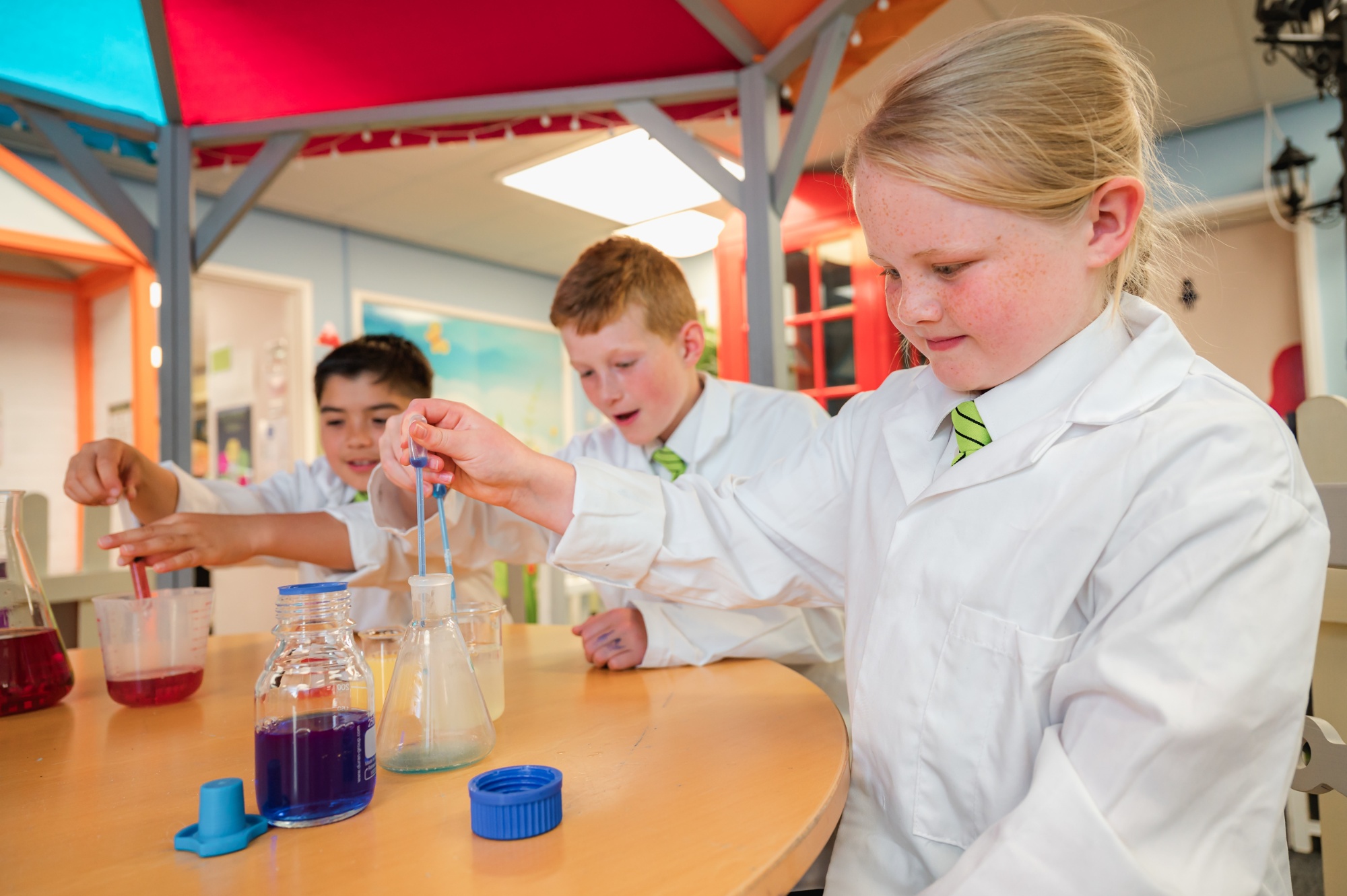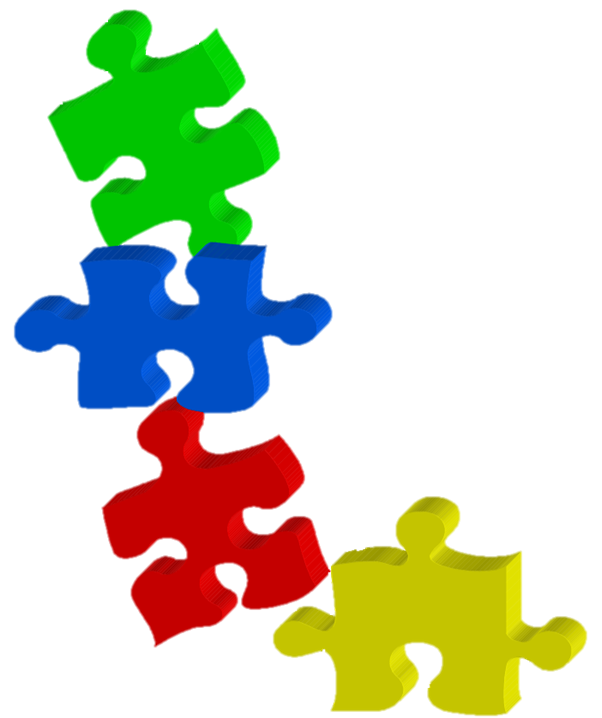Science
Our intent:
At SEJ, we believe that science is a doorway through which children are provided with opportunities that help them gain a greater understanding of the world around them. Through making links and connections to real life experiences, they learn about how and why things work. They will learn about pioneering scientists who paved the way, smashing the stereotypes of race and gender as we celebrate the successes of innovative scientists from the past and present. Exploring through their own investigations, they will engage in experiments, be encouraged to question and challenge mindsets, and develop an interest in the awe and wonder that is found in our day-to-day lives, the wider community and stretching further into outer space.
To view our current long-term overview for science, please click here.

Our way:
Following the National Curriculum objectives and lesson suggestions from Cornerstones, lessons are adapted and designed for the children at SEJ. Lessons are interspersed within a themed project or can be blocked within a two-week window. Awe and wonder are created through our project launch days, capturing the children’s interests from the outset such as Potions Day and Blood Heart, where children get to dissect a lamb’s heart. In addition, Love To Investigate sessions (LTIs) are interwoven throughout the project to provide further hands-on experiences making our curriculum inclusive for all.
At SEJ, each science project begins with a ‘BIG Question’, which hooks the children in and engages them in the learning that is to follow. The proceeding series of lessons are tailored to enable the children to answer the ‘BIG Question’, which forms part of their assessment opportunity at the end of the project. Our inclusive curriculum ensures that all children get to experience science lessons that are varied, incorporating enquiry, investigation and experimentation with the aim of building a curious and questioning mind in children about the world around them.
Within each project, a carefully selected bank of scientific vocabulary is included. This vocabulary has been personalised for each project to ensure that there is progression from Year 3 to Year 6. Throughout the series of lessons, the vocabulary is embedded through talk and activities. It is an integral part of lessons ensuring that the science curriculum is vocabulary-rich; the children are encouraged to use subject specific vocabulary in their discussions and written work.
Throughout our curriculum, the children are introduced to significant scientists from both the past and present who have paved the way through making new discoveries and contributing to the world around us. Science feeds into the application of reading and writing skills when researching about different scientists. Furthermore, science pioneers are celebrated during British Science Week, assemblies and through Black History Matters.
Every classroom has a science working wall which includes flipchart paper. Here the teacher is able to model written explanations, share diagrams and write definitions of subject specific vocabulary. The flipchart paper is a visual aid to support pupils and is used as a teaching aid to be referred to within lessons, and in subsequent lessons to facilitate knowledge retrieval.
Each project is organised in the same manner within the children’s books. It begins with a title page, an A4 Knowledge Organiser providing key words and visual prompts, a Bubble Page, a series of lessons and culminates with a quiz and children answering the ‘BIG Question’.
The Bubble Page is a double-page spread where the children are able to recall and reflect on their previous learning. Here they may write definitions, draw diagrams or complete short tasks to assist in consolidating their understanding. Further recall and retrieval practice of the science skills studied are conducted during early morning challenges.
By the end of the project, having investigated and explored through experimentation, the children will have a vast knowledge and understanding of the content to be able to complete an end of project quiz and answer the ‘BIG Question’. The quiz consists of a series of questions about the project requiring the children to use fluency and reasoning skills. In order to support the children in answering the ‘BIG Question,’ they are able to refer back to their Bubble Page and the work from their previous lessons. Children are able to demonstrate their understanding through written explanations, diagrams, physical creations or presentations. The culmination of responses from the quiz and ‘BIG Question’ enable the teacher to make informed judgements to be able to summatively assess the children’s knowledge and understanding within that project.
In addition to short-term retrieval practice, further opportunities are interwoven within the curriculum to help the children to retain the knowledge that they have learned. SEJ provides ‘Innovation Fridays’ which enable the children to consolidate and further embed their learning through revisiting projects after a minimum six-week period. This is an opportunity for children across the whole school to reflect upon and revisit prior learning; to celebrate their retained understanding through challenges designed and planned for the children to display their knowledge and skills. During these sessions, children construct, perform or present what they have learned and can recall from previous projects such as recreating the journey of the digestive system within a comic book format or construct a human circulatory system through choreographed movements on the playground.

